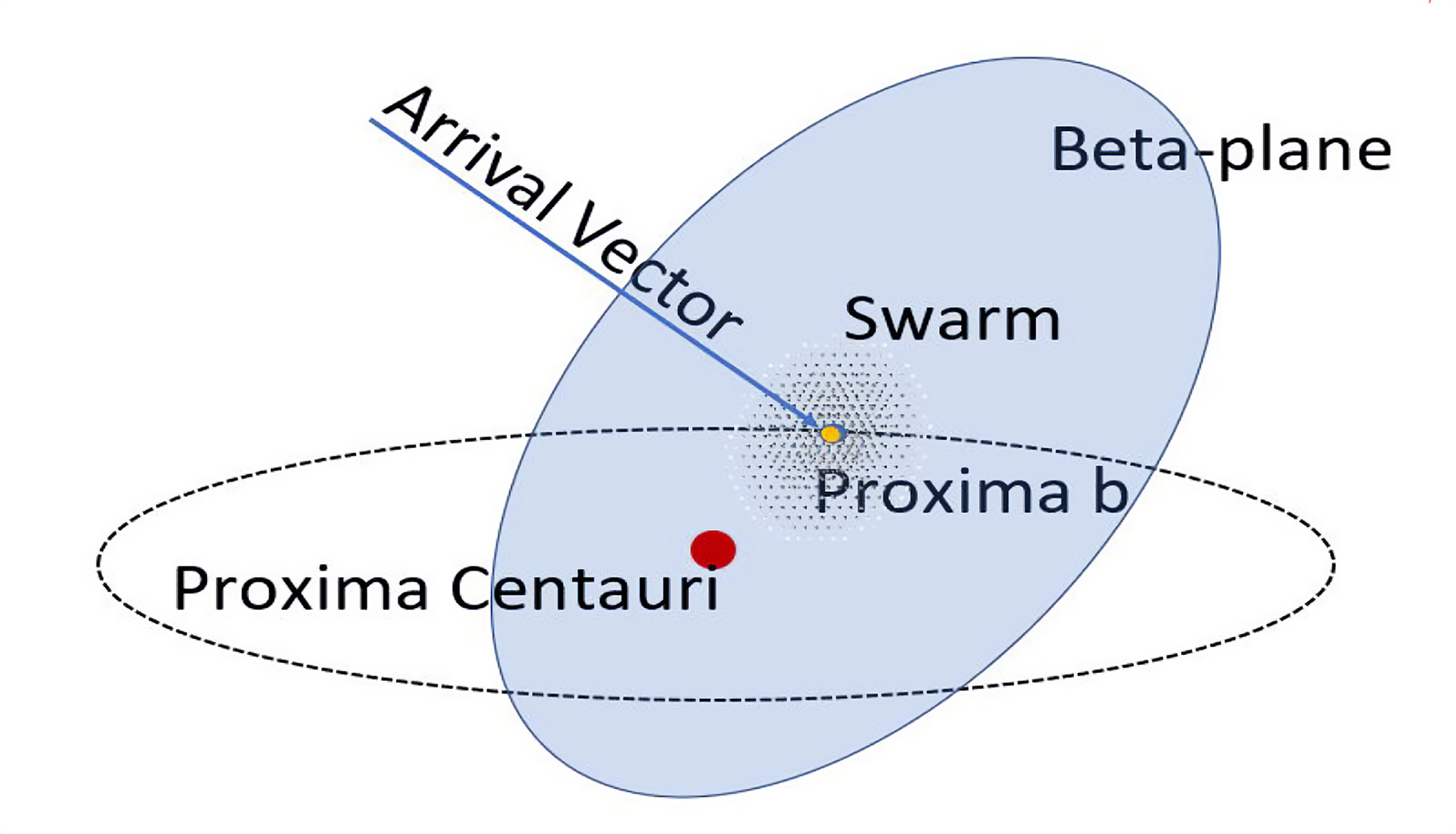Space Initiatives, Inc. has proposed a groundbreaking mission to explore Proxima b, the nearest potentially habitable exoplanet, using a swarm of tiny gram-scale probes. These probes, powered by a 100-GW laser beamer, will be launched at 20% of the speed of light and will operate autonomously due to the 8-year communication lag with Earth. The mission’s success hinges on the probes’ ability to form a mesh network, synchronize their clocks, and navigate precisely across the vast interstellar distance.
During their 20-year journey, the probes will maintain formation by adjusting to the interstellar medium’s drag, eventually forming a lens-shaped network spanning approximately 100,000 kilometers. This coordinated swarm will amplify their communication signal, allowing them to send data back to Earth simultaneously, significantly enhancing the data return compared to a single probe.
The concept also includes resilience to losses, as the large number of probes ensures mission continuity despite potential attrition. The team plans to develop and test these swarming techniques in simulations, with the potential to apply them to various space exploration missions well before the mid-century, such as covering cislunar space or studying planetary magnetospheres. These precursor missions will pave the way for the ultimate interstellar voyage.
Read more at NASA…
 Space Initiatives, Inc. has proposed a groundbreaking mission to explore Proxima b, the nearest potentially habitable exoplanet, using a swarm of tiny gram-scale probes. These probes, powered by a 100-GW laser beamer, will be launched at 20% of the speed of light and will operate autonomously due to the 8-year communication lag with Earth. The mission’s success hinges on the probes’ ability to form a mesh network, synchronize their clocks, and navigate precisely across the vast interstellar distance.
Space Initiatives, Inc. has proposed a groundbreaking mission to explore Proxima b, the nearest potentially habitable exoplanet, using a swarm of tiny gram-scale probes. These probes, powered by a 100-GW laser beamer, will be launched at 20% of the speed of light and will operate autonomously due to the 8-year communication lag with Earth. The mission’s success hinges on the probes’ ability to form a mesh network, synchronize their clocks, and navigate precisely across the vast interstellar distance.